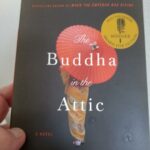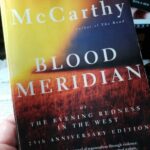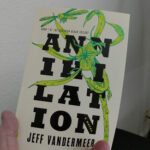The following exercise was inspired by John Daido Loori’s book The Zen of Creativity.
When we speak about Buddhist meditation, we are not limiting it to time on the cushion. Meditation is a means of opening to the world so that we experience it, rather than simply observe it. The emphasis is sharing whatever there is of self with whatever we observe, allowing the two to breathe as one.
The following exercise can help develop gentle concentration. The practice engenders an open mind of shared communication between observer and observed, and lifts us from our normal and rational mode of observation into sharing.
A Meditation for Concentration
Let’s begin with a simple meditation.
Sit comfortably, either on a cushion or chair, or whatever suits you.
Sit with your spine straight, and so you are not slouched or resting against a wall or chair back. This allows an unencumbered flow of breath through your body, from crown to toes.
Breathe naturally. Neither forced nor shallow. Breathe in, and then breathe out.
Keep your eyes open. This is important. You should not lull into this meditation, but instead remain fully aware of the sights, sounds, and all that is around you.
On your first in-out breath, count 1. Say it to yourself, without speaking aloud.
For your second in-out breath, count 2. Continue this process until you have counted 10 breaths. Then begin again at 1.
Notice if your mind wanders, or if for any reason you lose count. If so, simply resume, beginning at 1 again. It is not important that you reach 10. It is only important that when your mind wanders or you lose count, that you return to the exercise and start again at 1.
Do this for 5 minutes. Either set a timer, or estimate when 5 minutes has transpired. Do not clock watch. Focus on your breath.
Deepening Concentration
Now place an ordinary object within your eyes’ view in front of you. It should be nothing special. Maybe something from your desk, or a soda can.
Focus your vision on this object, while again counting your breath.
Do this for 5-10 minutes.
And Now Write…
Return to your desk, or wherever you are comfortable writing. Write a poem, an essay, or a haiku about the object you observed. Whatever you write, make it no more than three lines long.
In your writing, do not name the object by its function (i.e, a soda can is used to hold soda, allowing me to drink from it). Besides not naming its function, do not write any words written on the object. Do not tell its color, nor its shape, nor its size.
In your writing, do convey the object’s color, shape, and size, but not its function or any words written on it. Approach your writing slowly. Give yourself time to concentrate, but no more than 5 minutes to complete your writing.
Why this Meditation and Exercise
The effort here is to see the object beyond conventional observation.
All writing must be specific, and often you will use function and color and dimensions to define a thing. But challenge yourself to see if you define those things by the rhythm of the words (as you may experience in limiting your piece to three lines) and by a deeper look into the unconventional.
Again, the purpose of the exercise is NOT to teach us to write without mentioning color, shape, or functionality. It is meant to help writers see beyond these characteristics to the unconventional, so that when we write about objects we can see both how they are mundane and surreal.
Do not beat yourself up about whether you succeeded or not. Do not judge. Feel the words you’ve written as an experience.
After the exercise…
Read the opening lines of Vladimir Nabakov’s Lolita. Ask how they make you feel? How has the writer conveyed rhythm? Has he succeeded in painting a picture of Lolita? How?
Do you want to read more?
Lolita, light of my life, fire of my loins. My sin, my soul. Lo-lee-ta: the tip of the tongue taking a trip of three steps down the palate to tap, at three, on the teeth. Lo. Lee. Ta.
– Vladimir Nabokov, Lolita






